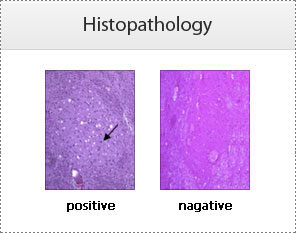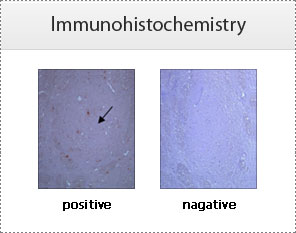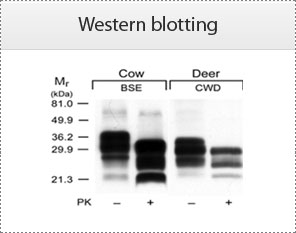
Designated as WOAH Reference Laboratory for Chronic Wasting Disease(CWD) at the 80th WOAH general session in May, 2012.
Dr. Hyun-Joo Sohn
[Animal and Plant Quarantine Agency]
Foreign Animal Disease Division
[Animal and Plant Quarantine Agency]
Chronic Wasting Disease (CWD) is a contagious neurological disease affecting deer, elk and moose and belongs to a group of diseases known as transmissible spongiform encephalopathies (TSEs). It causes a characteristic spongy degeneration of the brains of infected animals resulting in emaciation, abnormal behavior, loss of bodily functions and death.
It is not known exactly how CWD is transmitted. The infectious agent may be passed in feces, urine or saliva. Transmission is thought to be lateral (from animal to animal). Although maternal transmission (from mother to fetus) may occur, it appears to be relatively unimportant in maintaining epidemics. The minimal incubation period between infection and development of clinical disease appears to be approximately 16 months. The maximal incubation period is unknown, as is the point at which shedding of the CWD agent begins during the prolonged course of infection.
Because CWD infectious agents are extremely resistant in the environment, transmission may be both direct and indirect. Concentrating deer and elk in captivity or by artificial feeding probably increases the likelihood of both direct and indirect transmission between individuals. Contaminated pastures appear to have served as sources of infection in some CWD epidemics. The apparent persistence of the infectious agents in contaminated environments represents a significant obstacle to eradication of CWD from either captive or free-ranging cervid populations.
Cases of CWD occur most commonly in adult animals, but also in yearlings. The disease is progressive and always fatal.
The most obvious and consistent clinical sign is weight loss over time. CWD affected animals continue to eat but amounts of feed consumed are reduced, leading to gradual loss of body condition. Excessive drinking and urination are common in the terminal stages.
Behavioral changes also occur in the majority of cases, including decreased interactions with other animals, listlessness, lowering of the head, blank facial expression and repetitive walking in set patterns. In elk, behavioral changes may also include hyper-excitability and nervousness. Excessive salivation, drooling and grinding of the teeth also are observed.
Clinical signs of CWD alone are not conclusive. There are other maladies that have symptoms that mimic those of CWD. Currently, the only conclusive diagnosis involves an examination of the brain, tonsils or lymph nodes performed after death.
Clinical signs of CWD alone are not conclusive, and there is currently no practical live animal test. Gross lesions seen at necropsy reflect the clinical signs of CWD, primarily emaciation. Aspiration pneumonia, which may be the actual cause of death, also is a common finding in animals affected with CWD. Currently, the only conclusive diagnosis involves an examination of the brain, tonsils or lymph nodes performed after death.
The screening test is rapid test (sandwich ELISA etc) for the detection of the abnormal isoform of the prion protein (PrPSc) in postmortem deer and elk brain and retropharyngeal lymph node tissue. A confirmatory diagnosis is based on examination(histopathology) of the brain for the characteristic microscopic spongiform lesions and/or accumulation of the CWD associated prion protein in brain and lymphoid tissues using a technique called immunohistochemistry.
Research is being conducted to develop live-animal diagnostic tests for CWD. Early results indicate that a new live-test utilizing tissues from an animal's tonsils may be viable in deer, but so far has been ineffective in elk.



